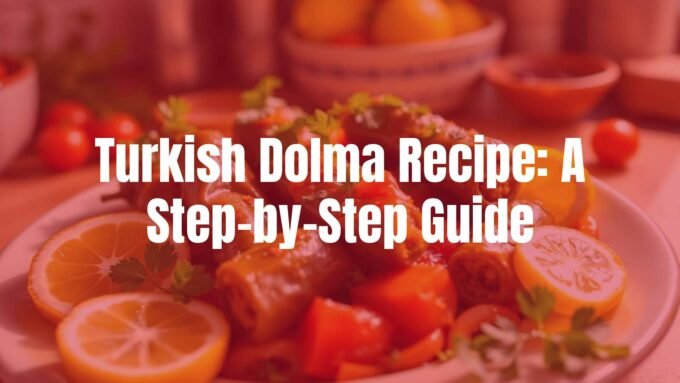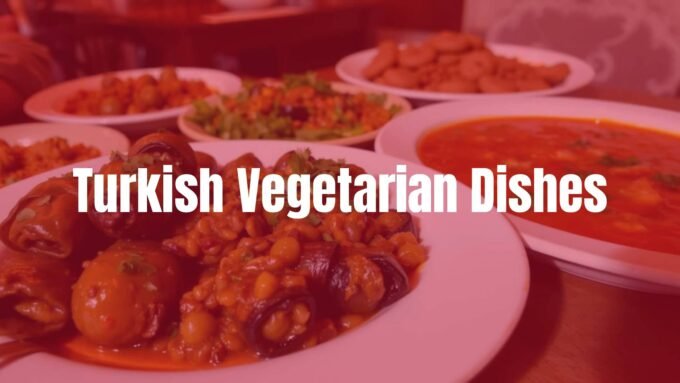Turkish spices sit at the core of the country’s cooking, turning simple foods into rich, memorable meals. They do more than add flavor; they carry stories of trade, culture, and local habits. From the tart lift of sumac to the warm depth of cumin and the gentle heat of Aleppo pepper, these spices shape the bold and comforting tastes loved across Turkey and beyond. This guide walks through Turkish spices, their past, their place in classic dishes, and easy ways to use them at home.

Turkish Spices: History and Culinary Significance
How Did Spices Shape Turkish Cuisine?
Turkey’s food, like its location, sits at a crossroads. Its place between Europe and Asia and long ties to the Silk Road brought in many spices over centuries. These goods from the Middle East and farther away helped build a clear food identity. Spices moved from rare goods for palaces to daily cooking for everyone, turning simple staples into rich meals. Careful picking and mixing of spices became a craft, making dishes that tasted great and carried meaning.
Turkish cooking favors balance. Spices are used to lift and match natural flavors, not to drown them out. The result is food that can be bold yet gentle, hearty yet bright. Each spice adds to smell, color, and taste, keeping long-held methods alive. Today’s cooks keep this spirit while adding new ideas, staying close to deep roots.
Historical Trade Routes and Spice Influence
Turkey’s spot on major trade lines, including the Silk Road, helped spread spices across its lands. For ages, caravans brought many types of spices from East to West. The Ottoman Empire gained a lot by managing these routes, which filled its kitchens with spices from India, Persia, and beyond and shaped cooking styles and flavor mixes.
At first, many imports were for sultans and elites and showed wealth. Over time, they reached home kitchens too. You can still feel this history in today’s lively spice markets across Turkey, where strong scents fill the air. These bazaars, with their bright piles of spices, are clear signs of how trade has long shaped Turkish food.
Types of Spices Used in Turkish Cooking
What Are the Most Common Turkish Spices?
Many spices show up again and again in Turkish dishes. Here are core ones and how they’re used:
- Cumin: warm, earthy; key for meats, stews, and köfte.
- Paprika: sweet or smoky; adds flavor and a red color.
- Sumac: tangy and lemon-like; great on salads and grilled foods.
- Aleppo pepper (pul biber): mild heat with fruity notes; used during cooking and at the table.
- Dried mint: cool aroma; common in yogurt dishes, soups, and with lamb.
- Coriander: warm and slightly citrusy; often paired with cumin.
- Oregano: strong and earthy; used for meats, fish, and vegetables.
- Black pepper: adds gentle heat and rounds out flavors.

Full List of Turkish Spices and Their Uses
Sumac
Sumac is easy to spot with its deep red-purple color and tart taste. It comes from dried, ground berries and gives a dry lemon-like kick. It’s often added at the end or used as a garnish, so the bright tang stays fresh.
Flavor Profile and Culinary Uses
Sumac tastes sour and lemony with a light bite. It can stand in for lemon juice or vinegar when you want a dry, tangy note. It also adds lovely color. It pairs well with olive oil for a quick dressing and works across many dishes, even some sweet ones.
Dishes Featuring Sumac
Sumac is common on pide and lahmacun, sprinkled before serving. It brightens Shepherd’s Salad (Çoban Salatası) and cuts through rich meats like Adana kebabs. It shows up on döner and other grilled dishes and is part of mixes like za’atar with herbs and sesame.
Aleppo Pepper (Pul Biber)
Aleppo pepper, or pul biber, is a staple in Turkey. It brings gentle heat, a fruity tone, and a hint of smoke. The red flakes are used during cooking and at the table.
Flavor Profile and Culinary Uses
This pepper gives mild to medium heat with a soft, rich taste. It is less fiery than standard chili flakes and adds color and aroma. Use it in the pan, in rubs and marinades, or as a final sprinkle.
Dishes Featuring Aleppo Pepper
Use pul biber on grilled meat, poultry, fish, and kebabs, or mix it into yogurt dips like cacık and haydari. It boosts tomato sauces and dips like muhammara. It’s found in Turkish blends such as baharat and za’atar, and it’s great on soups, stews, roasted veggies, and menemen.
Urfa Biber (Isot Pepper)
Urfa Biber, from southeastern Turkey, is known for its dark red to purple-black color and deep, raisin-like sweetness with smoke and moderate heat.
Flavor Profile and Culinary Uses
The peppers dry in the sun by day and are wrapped at night, which gives a sweet, smoky, slightly fermented taste. The result is earthy, a bit sweet, and gently hot, with a rich aroma and dark color.
Dishes Featuring Urfa Biber
Use Urfa in marinades, rubs, and on grilled meats, kebabs, and roasted vegetables. It appears in blends like baharat. Mix it with olive oil and garlic for a simple sauce over hummus, yogurt, or roasted eggplant. In the southeast, it’s added to bread dough or sprinkled on pide and lahmacun. It’s also classic with lamb kebabs, where its sour-smoky edge balances the meat.
Mahlab
Mahlab comes from ground seeds of the St. Lucie cherry (Prunus mahaleb). It’s a special baking spice in Turkey.
Flavor Profile and Culinary Uses
Mahlab tastes sweet and nutty with light cherry and almond notes. It gives a gentle aroma rather than a strong hit. It’s used mainly in sweet breads and pastries.
Dishes Featuring Mahlab
It flavors Turkish baked goods, especially festive breads. In Tahinli Çörek, a sweet roll with tahini and sugar, mahlab adds a soft, fragrant layer. You’ll also find it in cookies and other holiday breads.
Dried Mint
Dried mint (nane) is common across Turkey. While fresh mint is used too, dried mint brings a stronger, earthier, cooling scent that suits many dishes.
Flavor Profile and Culinary Uses
Dried mint is cool and aromatic with a slight sweetness. It’s more potent than fresh mint, so a small amount is enough. It pairs well with cumin and paprika and lightens rich foods.
Dishes Featuring Dried Mint
It stars in cold dishes like cacık (a cool yogurt and cucumber dip). It’s great with lamb, in soups like red lentil (mercimek çorbası), often toasted in butter or olive oil first, and in dolmas and vegetable plates. You may even see it in some desserts and pastries. It also works in spice mixes and in summer drinks like ayran.
Cumin
Cumin (kimyon) is one of the most used spices in Turkish kitchens. It has a warm, earthy, slightly sharp taste. Seeds can be used whole or ground, with ground being common.
Flavor Profile and Culinary Uses
Cumin brings a deep, earthy flavor with a light bitterness and warmth. Toasting it briefly before grinding boosts its aroma. It adds depth to meats and lentils and shows up in many blends.
Dishes Featuring Cumin
Cumin is key in köfte, giving ground lamb or beef a full, savory taste. It seasons kebabs, stews, soups, and vegetable dishes. It often pairs with coriander. It shows up in rice pilafs and in dips like muhammara, adding an earthy note. It’s one of the defining flavors of Turkish cooking.
Dried Oregano
Dried oregano (kekik) is a Mediterranean herb with a strong place in Turkish food. It’s aromatic and often stronger than fresh oregano.
Flavor Profile and Culinary Uses
Turkish oregano tastes earthy and a bit bitter with light mint notes. It stands up to rich meats and bold vegetables. It shines when it steeps during cooking. It’s also part of mixes like za’atar.
Dishes Featuring Dried Oregano
It seasons lamb, chicken, and fish, as well as grilled meats and vegetables, plus soups and salads. In Menemen (eggs with tomatoes, peppers, and onions), oregano adds aroma and depth. It can even be brewed as an herbal tea.
Nigella Seeds
Nigella seeds (çörek otu) are small black seeds from Nigella sativa. They are not the same as black cumin and have their own taste and smell, often used in breads and savory items.
Flavor Profile and Culinary Uses
Nigella tastes earthy, nutty, and lightly peppery, with hints of onion and oregano and a slight bitterness. Toasting brings out a stronger aroma. They add crunch and a burst of flavor.
Dishes Featuring Nigella Seeds
Nigella is famous on simit, the ring-shaped bread often eaten at breakfast, where it adds a nutty scent and look. It also tops pide and çörek and can be sprinkled on pastries, salads, or blended into spice mixes.
Baharat Spice Mix
What Is Baharat?
Baharat means “spices” in Arabic and is a popular blend across Turkey and the Middle East. Recipes vary by region and home, but Turkish versions often include cinnamon, cloves, cumin, coriander, nutmeg, and black pepper. Some add allspice, cardamom, paprika, or fenugreek.
Typical Uses in Turkish Cooking
Baharat adds warmth and depth to many dishes. Use it as a dry rub for meat and poultry before grilling or roasting, or stir it into marinades, sauces, soups, and stews. It’s great in rice dishes and works well on chicken. Its sweet-savory balance makes it a handy blend for classic Turkish flavor.
Additional Spices: Coriander, Cinnamon, Cloves, Saffron, Cardamom, Marash Pepper, Allspice, Nutmeg
Many other spices help build Turkish taste. Coriander (Kişniş) is usually ground and brings a warm, slightly citrusy note, often with cumin in dishes like Mercimek Köftesi (lentil patties). Cinnamon (Tarçın) lends sweet warmth to desserts like baklava and sütlaç (rice pudding) and also appears in pilafs and meat dishes. A pinch in Turkish coffee is a nice touch.
Cloves (Karanfil) are very aromatic and a bit sweet; use in small amounts for meats, stews, and drinks like salep. Saffron (Safran) adds a special scent and golden color to dishes like Safranlı Pilav and some sweets. Cardamom (Kakule) flavors Turkish coffee and desserts and sometimes rice. Marash Pepper is related to Aleppo pepper, with a fruity taste and medium heat, and is used in salads like Çoban Salatası. Allspice (Yenibahar), which tastes like cloves, nutmeg, and cinnamon together, is common in köfte and dolma fillings. Nutmeg (Muskat) appears in sweets like sütlaç, in white sauces for dishes such as moussaka, and in some meat recipes.
Regional Differences in Turkish Spice Usage
Turkey’s varied land brings varied food. Spice habits change from place to place, based on local crops, history, and taste, creating many distinct styles.
Southeastern Turkish Spices
Cities like Gaziantep and Urfa favor bold and often spicy food. Chiles lead the way: Aleppo pepper and Urfa Biber bring heat, smoke, and fruit notes. Cumin and coriander add earthy depth to famous meat dishes. You’ll see these spices in lahmacun, Adana kebab, and many stews. Local drying and “sweating” methods for peppers create their special taste.
Aegean and Mediterranean Spice Traditions
In the west, cooking moves to lighter food with lots of seafood, vegetables, and olive oil. Herbs shine here. Oregano, thyme, and bay leaves season fish, vegetables, and salads. Sumac adds tang to dishes like Çoban Salatası. Chiles appear, but with a gentler hand, letting fresh produce stand out.
Black Sea Regional Specialties
The Black Sea area uses many fresh herbs with mild spice. Dill and parsley pair well with fish (like hamsi), soups, and vegetables. Dried spices are used with a light touch. Black pepper and a bit of paprika may show up, but fresh fish and greens lead the flavor.
Role of Spices in Traditional Turkish Dishes
In Turkish food, spices are more than an afterthought. They shape each dish’s character with aroma and depth. The skill lies in mixing them so the final taste feels balanced and true to tradition.
Popular Dishes and Their Signature Spices
Many classics are known by their spice mix. Adana kebab and İskender kebab use cumin, paprika, and Aleppo pepper to season the meat with rich depth. Köfte often has cumin and allspice for warmth and aroma. Lentil dishes like Mercimek Köftesi and lentil soup often use coriander and cumin, with a finish of dried mint.
Vegetable dishes lean on herbs and gentler spices. Imam Bayıldı (stuffed eggplant) uses a mix of herbs and mild spices. Salads like Çoban Salatası get brightness from sumac. Pilafs and bulgur dishes often include cinnamon, allspice, and cumin, adding warmth to the grains. Even sweets like baklava and sütlaç benefit from cinnamon, cloves, and cardamom to add aroma and depth.
Blending Spices for Unique Turkish Flavors
Turkish cooks often blend several spices rather than use just one. The aim is balance: warmth, heat, tang, and aroma working together. A common step is to toast whole spices like cumin or coriander, then grind them. This brings out their oils and makes the flavor stronger.
Baharat is a great example of a go-to blend, from cinnamon to cumin, used across many dishes. A spicy mix might combine Aleppo pepper, dried mint, and salt. While many blends are traditional, home cooks also mix to taste and to match the ingredients on hand. The goal is always to let the main ingredients shine while adding the right amount of spice.

Buying Turkish Spices: Markets and Online Options
Finding good Turkish spices can be exciting. You can buy them in Turkey’s bazaars or from trusted online shops and bring these bold tastes into your kitchen.
Famous Spice Markets in Turkey
Turkey’s bazaars (çarşı) are busy, fragrant places tied to centuries of trade and food culture. Mounds of colorful spices fill the stalls, and the scent lingers in the air.
Spice Bazaar (Mısır Çarşısı) – Istanbul
In Istanbul’s Eminönü district, the Spice Bazaar is the best-known spot for spices. This historic market has sold spices since Ottoman times. You’ll find all kinds of Turkish spices, dried fruits, nuts, teas, and Turkish delight. Many vendors offer samples and explain their goods, making it a great stop for spice lovers.

Grand Bazaar (Kapalıçarşı) – Istanbul
The Grand Bazaar is huge and sells many things beyond spices, but it still has plenty of spice shops. Finding your way through its many lanes is part of the fun. Look for sellers known for fresh, fragrant stock. It can be touristy, but the scale and history make it worth a visit.
Gaziantep Spice Market
Gaziantep in the southeast is famous for its food. Its spice market carries local peppers like Urfa Biber and Marash pepper in many forms. You can pick up blends and ingredients tied to the area’s rich dishes.
Tips for Purchasing Spices Abroad and Online
- Check freshness: spices should be dry, bright in color, and smell strong.
- Ask to smell before buying in markets; follow where locals shop.
- Choose trusted sellers online; read reviews and look for good storage practices.
- Buy whole spices when you can; grind small amounts as needed.
- If buying ground spices, get smaller packs so they stay potent.
- Check origin and any quality seals when available.
- Store them well after purchase (see next section).
How to Store Turkish Spices for Best Freshness
Good storage keeps your spices strong in flavor and aroma. They fade fast if handled poorly. Use the right containers and spot at home so your dishes keep their true taste.
Storage Methods and Shelf Life
Keep spices away from air, moisture, heat, and sunlight. A cool, dark cupboard or pantry works well, not above the stove or near appliances. Use airtight jars with tight lids or well-sealed bags.
Whole spices last longer than ground ones. Grinding right before use gives the best flavor. Label jars with the name and date so you know what you have and when you got it.
| Form | Average shelf life |
|---|---|
| Whole spices (e.g., cumin seeds, peppercorns) | Up to 2 years |
| Ground spices | 6-12 months |
Avoiding Common Mistakes with Spice Storage
Don’t store spices near heat or in direct sun; both fade color and aroma fast. Avoid moisture by closing lids tightly and keeping jars away from steam. Skip buying giant amounts, especially ground spices, unless you use them often. Check your spices now and then; if the smell is weak or the color is dull, it’s time to replace them.
FAQs About Turkish Spices
What Is the Red Spice in Turkish Food?
The most common red spice is pul biber (Aleppo pepper). It’s dried chili in flakes with mild to medium heat, fruity notes, and a slight smokiness. It’s used across many dishes and at the table for color and gentle warmth. Paprika is also used, but pul biber is the classic red flake in Turkey.
Can You Make Turkish Spice Mixes at Home?
Yes. Many home cooks make their own blends to match dishes and taste. A simple baharat can include ground cumin, paprika, cinnamon, allspice, and black pepper, with amounts adjusted to your liking. For heat, mix Aleppo pepper with dried mint and a pinch of salt. Za’atar (common in the region and used in Turkey) often has thyme, sesame seeds, and sumac.
Toast whole spices like cumin and coriander in a dry pan for a minute or two, then grind. This brings out their oils and makes your mix more aromatic. A small spice grinder helps a lot.
What Is Turkish All-Purpose Seasoning?
There isn’t a single standard blend for every dish, but many “Turkish spice mixes” aim to capture common flavors. They often include paprika, cumin, coriander, garlic powder, onion powder, and black pepper. Some versions add dried mint, oregano, or Aleppo pepper for mild heat.
This kind of blend is meant to be flexible for meats, vegetables, soups, stews, and rice. It’s an easy way to add classic Turkish taste without measuring each spice every time. Regional styles and personal taste will change the exact mix.
Which Spices Define Turkish Cuisine?
Several spices stand out. Cumin brings a warm, earthy base to many meat and savory dishes. Sumac gives a tart, citrus-like lift to salads and grilled foods. Aleppo pepper (pul biber) adds gentle, fruity heat and bright color and is used widely at the table.
Dried mint adds a cool, aromatic note that balances rich foods, especially with yogurt. Paprika brings color and mild pepper flavor. Others like coriander, oregano, black pepper, allspice, and cinnamon also play key roles. Together they shape the core taste of Turkish cooking.















Leave a comment